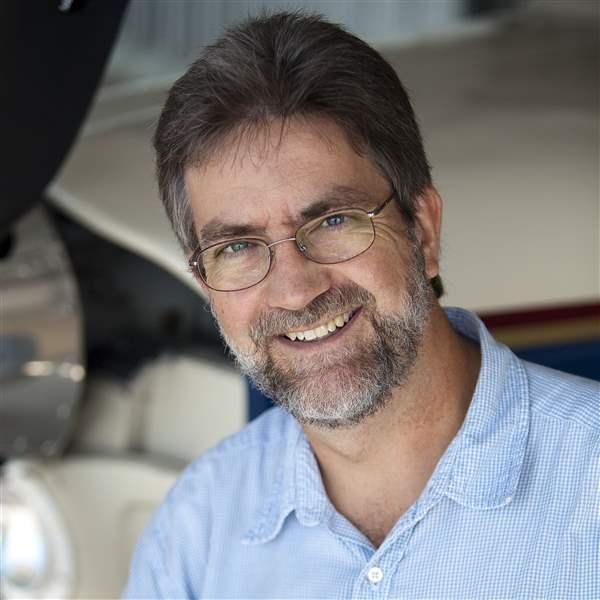Thoughts on working as a crew
Yes, it's happened to me. Occasionally while I'm on an approach to landing, the gruff, flat, monotone voice of my first instructor says simply, "Airspeed." (Can you guess what aspect of learning to land gave me the most trouble as a student pilot?) Sure enough, I'll look at the airspeed indicator and see that I'm a couple knots slower than I'd like to be. An almost imperceptible pitch down gets me right back on target.
But a couple of weeks ago, the voice wasn't telling me "Airspeed." It was telling me, "Pink in the wings, captain." And the voice wasn't disembodied, either; it was emanating from Wayne Phillips, author of our monthly Career Advisor column (see p. 59) and a regular contributor to our Career Pilot section. Phillips also runs the Airline Training Orientation Program, which provides a weekend immersion into the world of airline pilot training. Tom Haines, editor in chief of AOPA's magazines, and I were flying a $26 million full-motion Boeing 737-800 simulator at the Continental Airlines Training Center in Houston, and Phillips was our sim instructor, sitting in a jump seat behind us as I flew an approach to Runway 28 Right at San Francisco International Airport (and devilishly failing engines, hydraulics, and other systems of the popular airliner). Technically it's recurrent training for me, as I'd participated in the ATOP course in 2003 (see "Airline Captain for a Day," February 2004 AOPA Flight Training).
"Pink in the wings" is Phillips's gentle reminder to keep a pink line aligned with the symbolic airplane wings on the Boeing's electronic attitude indicator. The line is generated by the airplane's flight director, which computes the commands needed for the airplane to follow a preplanned route. This is the same data that directs the autopilot when it's on, but the pilot can choose to follow its guidance manually. (Most of the time, airline pilots employ the autopilot.)
Learning to fly is a solitary experience. If you go on to fly professionally as a member of a crew, however, it's an entirely different world, and you'll need to develop some new skills. Flying as part of a two-pilot crew is nothing at all like accompanying a pilot friend on a cross-country trip, where you might handle the radios or navigation tasks. Airline cockpit procedures are built around the two-crew concept; the pilot flying controls the aircraft while the pilot monitoring handles communication tasks, provides the appropriate checklists when they're needed--and, of course, monitors what the pilot flying is doing.
You'll find that checklists are handled differently, compared to how you approach them today in your Cessna, Piper, Diamond, or Cirrus. Airline pilots will perform flows, in which their hands and eyes follow prescribed patterns over controls and indicators--afterwards, they consult the checklist to ensure that nothing was overlooked. (By comparison, because of the way we use them, most of us could say we actually have do lists, because we tend to perform the tasks as we read the lists: Lights, on; Transponder, on; Takeoff power, apply.)
Most of the systems aboard the Boeing 737 are controlled from the expansive overhead panel. The flow there is from top to bottom, and then from left to right, Phillips explains. He likes to quip that all you have to do is turn switches and knobs until all the orange lights are off, and you're ready to go--while it turns out that he's correct, it's not quite that simple, at least not for a novice to the aircraft.
You could say that crew resource management (CRM), which is how airline pilots work together (and, when appropriate, call upon other resources--both aboard the aircraft and on the ground), is really just another term for teamwork. If this experience sounds interesting, or you'd like to take a "drink from the fire hose" that is airline training, contact Phillips through his Web site. Some of his students are considering a career change, while others are prepping for airline interviews. You must hold at least a student pilot certificate--and yes, you will experience emergencies in the simulator.
Just as in the flying of multicrew aircraft, teamwork is critical to the ongoing success of a monthly magazine such as AOPA Flight Training. AOPA is privileged to have a very talented team of editors, photographers, designers, and support staff who work together to produce this magazine each month.
Many of you know that AOPA also publishes another, larger magazine each month--AOPA Pilot, which celebrated its fiftieth anniversary in March. Many of our team members actually work on both publications. I began to do the same earlier this year, when I was asked to serve as editor of AOPA Pilot. Julie Summers Walker, capable managing editor of AOPA Pilot, has added that role for AOPA Flight Training, and other staffers also will share more time between the two titles. We believe that you'll benefit from the additional expertise, perspectives, and experiences they provide. I will continue to serve as AOPA Flight Training's editor, and of course my e-mail box is always open.
E-mail Mike Collins, editor of AOPA Flight Training, at [email protected].



